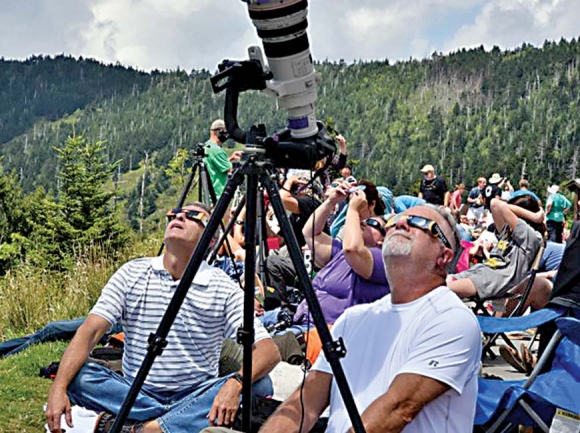“We strive each year to provide exceptional services to the visitors who come to enjoy the Smokies,” said Superintendent Cassius Cash. “With increasing visitation across seasons, this does not come without challenges. I am proud of the employees who work hard each day to meet these challenges, along with the support of our volunteers and partners who collectively help us care for this incredibly special place.”
The 2017 visitation figure represented a 0.2 percent increase over 2016, with the highest visitation in July, followed by October and June. The shoulder season months of January, February, April, September and November set monthly visitation records, following a pattern of the park seeing increased year-round visitation.
Visitation received a boost when the park hosted the largest special event in its history — the Great American Solar Eclipse. More than 47,000 visitors entered the park to view the eclipse on Aug. 21, a 64 percent increase from the visitation figure for that day in 2016. Eclipse events offered in Cades Cove, Clingmans Dome, Oconaluftee Visitor Center and Sugarlands Visitor Center drew 15,600 people, with an additional 26,000 people watching a live broadcast of the Clingmans Dome event in partnership with NASA. Another 6 million people watched the event online worldwide through the NASA 360 broadcast.
Overnight camping was slightly down from 2016, at 400,000 nights, but still above the five-year average. The park offers nine front-country campgrounds and 100 backcountry campsites.
Volunteers were essential to park operations in 2017, with 2,800 volunteers donating more than 115,000 hours of service. The figure represents an increase in the number of volunteers but a slight dip in the number of hours in 2016, which saw 2,230 volunteers working 117,000 hours. Volunteers maintained trails, removed invasive plants and provided visitor information along trails, at visitor centers and in campgrounds.
Additional park visitation statistics are online at irma.nps.gov/Stats/.
